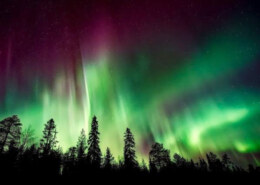Does everything get smashed to bits when two galaxies collide? Does every black hole contain a singularity?
I would choose to explore the aurora borealis firsthand because it is one of the most mesmerizing natural phenomena on Earth. The aurora is a beautiful and dynamic display of light that occurs when charged particles from the sun collide with Earth's atmosphere. Experiencing the vivid colors and theRead more
-
- I would choose to explore the aurora borealis firsthand because it is one of the most mesmerizing natural phenomena on Earth. The aurora is a beautiful and dynamic display of light that occurs when charged particles from the sun collide with Earth’s atmosphere. Experiencing the vivid colors and the shifting patterns of the northern lights would be a profound and awe-inspiring encounter with nature’s beauty and power. Additionally, witnessing the aurora borealis in person offers a unique opportunity to connect with the natural world in a remote and often serene environment, far from the distractions of everyday life.


When two galaxies collide, not everything gets smashed to bits. Instead, the vast distances between stars mean that direct collisions between individual stars are rare. The gravitational interactions can cause dramatic shifts in orbits, triggering star formation as gas clouds compress, but the galaxRead more
When two galaxies collide, not everything gets smashed to bits. Instead, the vast distances between stars mean that direct collisions between individual stars are rare. The gravitational interactions can cause dramatic shifts in orbits, triggering star formation as gas clouds compress, but the galaxies generally merge over time, forming a new, larger galaxy. As for black holes, it is widely believed that each contains a singularity, a point where matter is infinitely dense and the laws of physics as we know them break down. However, the true nature of singularities remains speculative, as they are hidden behind event horizons, and current physics cannot fully describe their properties.
See less